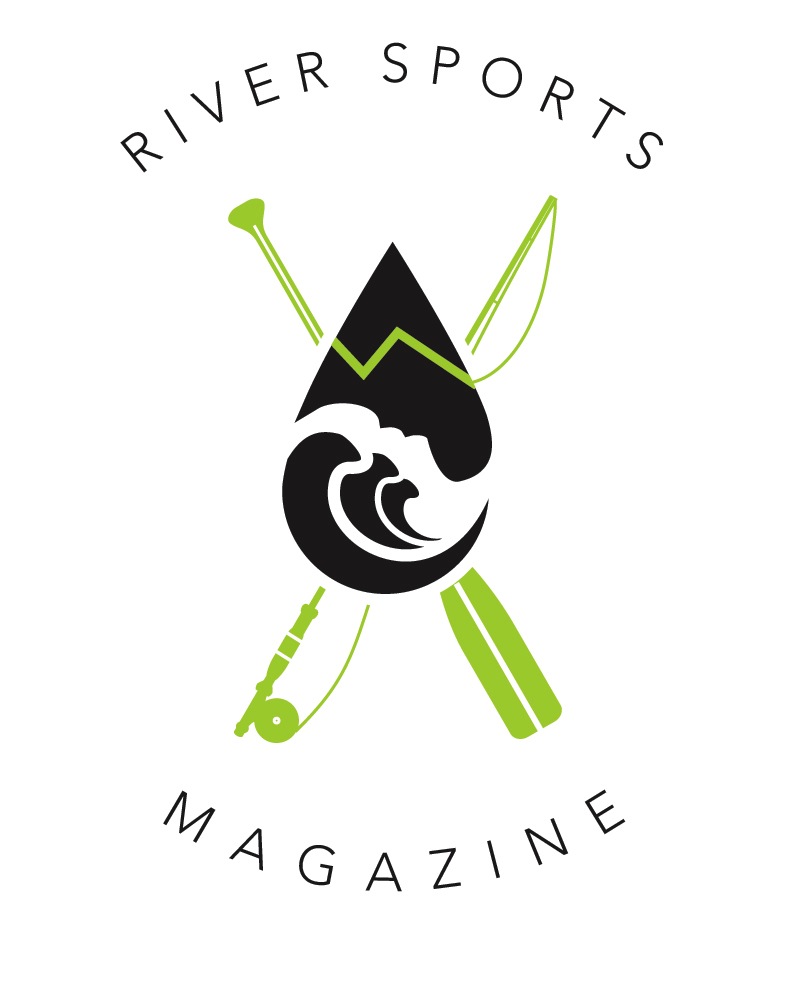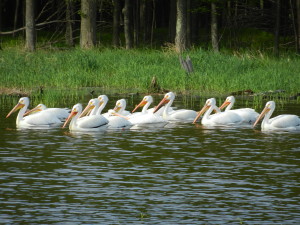The words “canoeing” and “wild life” seem to be in contradiction, since canoeing connotes a relaxing and peaceful paddle on a remote lake or flowing river; while the wild life indicates someone who is wild, impulsive, excitable, and a party-person. However, canoeing and watching for “wildlife” while on a water trail are most compatible.
I learned how to canoe during my time in the Boy Scouts and have not stopped since. My first encounter with wildlife in a canoe takes me back to around age 10 or 11. One day, out on the water with a friend at our Upper Michigan scout camp, I remember how intrigued I was when we came upon a good-sized turtle working its way through the water. I always enjoyed turtles, so we followed this one as far as we could before it submerged. I remember the thrill of exploring the waters in a canoe and discovering wildlife in its natural environment.
Waterfowl Sighting in Minnesota
One highlight of observing wildlife in my adult life took place during a solo paddle on Shagawa Lake while vacationing near Ely, Minnesota. It was a peaceful evening as the sun was setting on the horizon. I paddled out about 100 yards from shore where a common loon was floating in silence. My strokes were deliberately slow and quiet as I drifted closer toward the loon. I eventually got within two paddle lengths of this magnificent waterfowl. Its eyes were red and beady, its black beak long and pointed, and its throat held a white stripe. The top of its white-speckled back floated just above the waterline. She was also much larger than I expected a loon to be.
At this juncture, the loon was moving slowly out into the open bay and I was alongside it moving at the same speed. She looked at me occasionally but kept moving without concern. We must have traveled a couple of hundred yards together. Realizing it was getting dark, I stopped paddling and the loon continued on. I returned back to shore. I then realized I should have kept a much greater distance from the big bird. However, circumstances allowed me this rare opportunity for a close encounter.
Additional Wildlife Encounters On The Water
In the Big Island Lake Wilderness, a chain of lakes in the Hiawatha National Forest of Upper Michigan, a friend and I were paddling on Twilight Lake toward our designated campsite. Out of nowhere, a swift-moving creature swam under our canoe, and then another came just as quickly from another direction. It took several seconds before we realized we were being investigated by a pair of otters. They were quite curious but eventually swam away only to entertain us on occasion by popping their heads above water.
Another wildlife encounter took place in the Quetico Provincial Park in Ontario while paddling back to our portage on Pickerel Lake near Atikokan. A long, narrow river connected two lakes on our route, which is where we spotted a huge moose. It was feeding in the marshes and refused to move for us. Its ears were pressed back against its humungous head, letting us know he was not pleased to see us. We kept our distance and patiently waited before paddling on. We sat for quite some time, when finally the moose raised its head, looked at us and walked out of the river and into the forest.
On another occasion, while paddling with a group on the Manitowish River of Northern Wisconsin, a couple of eagles decided to follow us downstream. It was quite amusing watching them sashay back and forth, landing in a tree ahead of us, and then following us again as we paddled through the Northwoods.
Wildlife encounters abound when canoeing or kayaking on lakes and rivers. While backpacking, I also see other wildlife, such as bear, fox, wolf, squirrels, raccoons, snakes, birds and other woodland creatures.
Observe, But Don’t Disturb
According to the Outdoor Recreation Participation Topline Report, there were an estimated 384.6 million total outings for wildlife viewing, with an average of 25.2 outings per wildlife viewer. That’s a lot of observers!
A committed wildlife observer will watch from a distance and not make a disturbance. In the Sylvania Wilderness Area of Upper Michigan, for example, visitors are not permitted on any small island from the time the ice melts until after July 15 so that loons may nest peacefully. It is illegal to disturb a nesting loon site, so the policy is to stay clear of the nests and off the islands during this season.
In the Wisconsin Wildlife Viewing Guide, written by Mary K. Judd, she identifies the following viewing ethics and responsibilities:
- Don’t disturb the animals
- Never chase or harass animals
- Don’t feed the wildlife
- Don’t pick up orphaned or sick animals
- Leave the site undisturbed
- Honor the rights of private landowners
Minnesota’s Department of Natural Resources Wildlife and Nature Viewing Tips add to the list: don’t trespass on private property (ask before entering), leave pets at home, be courteous to other wildlife viewers and don’t approach certain animals.
Best Time and Viewing For Wildlife
For best viewing, I recommend using binoculars to spot wildlife. I have two pairs that bring my eyes closer to any creature in the forest or on water. To lighten my load, I also have a monocular that does well for spotting animals, too.
The best time to catch wildlife in motion is in the early morning or early evening because animals are the most mobile at those times for feeding and watering. It’s important to be patient–sit and wait for the best sightings. It’s also helpful to learn about tracks, scat and markings so you can try tracking certain animals you wish to observe. There are some good field guides for making positive matches.
For The Record
Birders are notorious record keepers, using their camera and a record book or journal for keeping track of their sightings….especially when going for “A Big Year” (annual competitive bird search). Do likewise and take your camera along on your canoe or kayak trips. Invest some money in a quality point-and-shoot camera with a zoom lens, and purchase a waterproof case to protect the unit. There is no sense in spending a lot of money on a good camera, only to have it get wet.
Also, keep a record or a journal of your sightings with the date, time, location and the creature that you saw. Other notes such as weather conditions, circumstances, and stories about the viewing are always good to record too.
Do Some Research
The animals I have observed while canoeing have been indigenous to the Midwest. Those who paddle in other parts of the country may see other kinds of animals, birds, and reptiles. Do your homework before heading out and learn about the wildlife that roams the area in which you plan to travel. Know what to look for and where to look for them.
Purchase some field guides, such as the National Audubon Society Field Guides, Peterson Field Guides, and National Wildlife Federation Field Guides. Or, pick up a compact reference such as Pocket Naturalist Guide Series, since they are light and easy to carry in your pocket. Such literature can be valuable tools in identifying wildlife and learning about them as you observe them.
My wife and I live on the Big Eau Pleine Flowage in central Wisconsin. I have paddled on the Big Eau Pleine many times. Wildlife abounds on our 6,000-plus acre water trail, with eagles, osprey, blue herons, cormorants, and pelicans. Last summer I found roughly 50 pelicans residing in a backwater bay where there is very little boat traffic. They were magnificent on land and beautiful in flight, with black on the end of their sophisticated flowing wings.
Educator Maria Montessori once wrote, “We cannot create observers by saying ‘observe,’ but by giving them the power and the means for this observation and these means are procured through education of the senses.” When canoeing or kayaking on lakes and rivers, learn to observe wildlife with your senses and enjoy what Mother Nature has to offer.





Beautifully written, Jim. Nothing beats being out of doors and seeing what lives around you. I enjoy all the articles I have read that I get my eyes on and have learned a lot from them. Thanks for doing this.